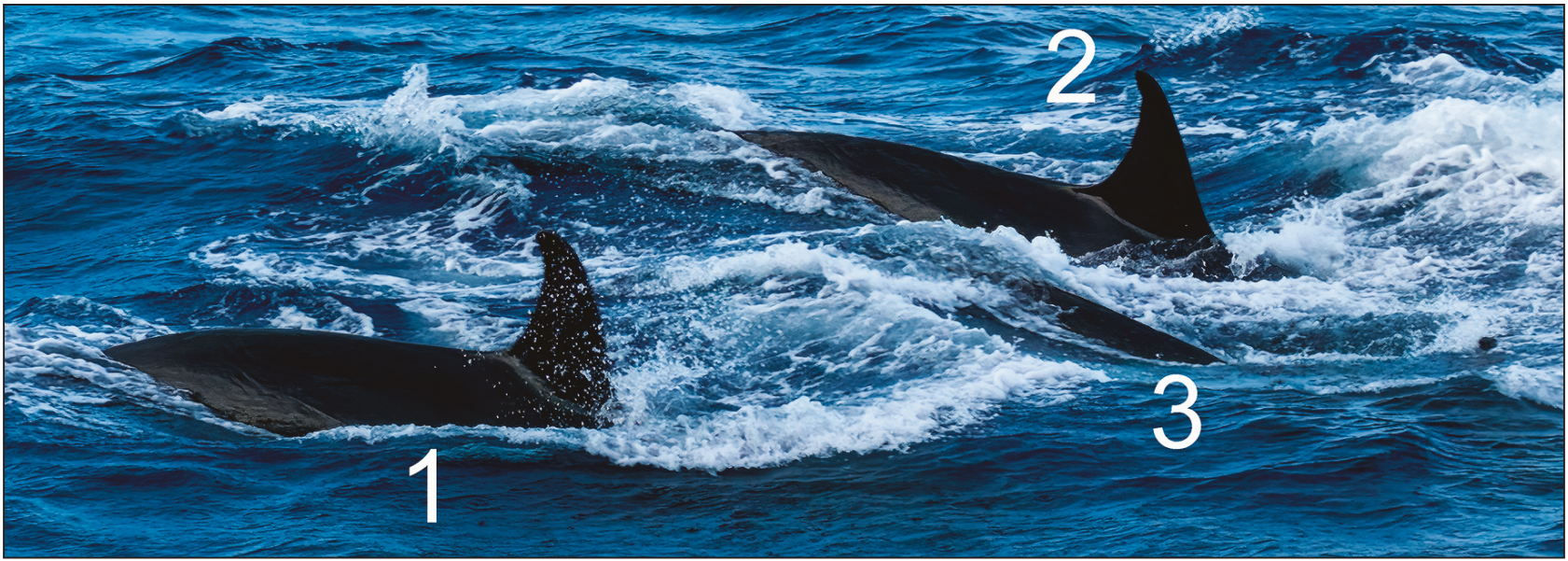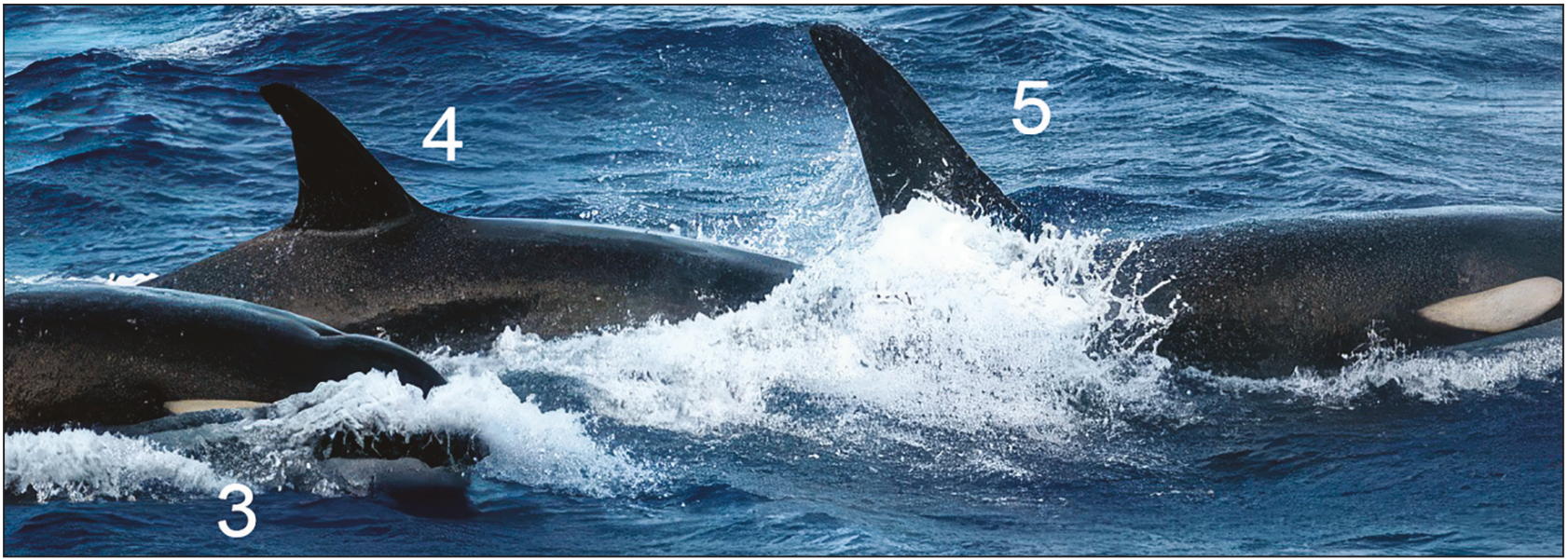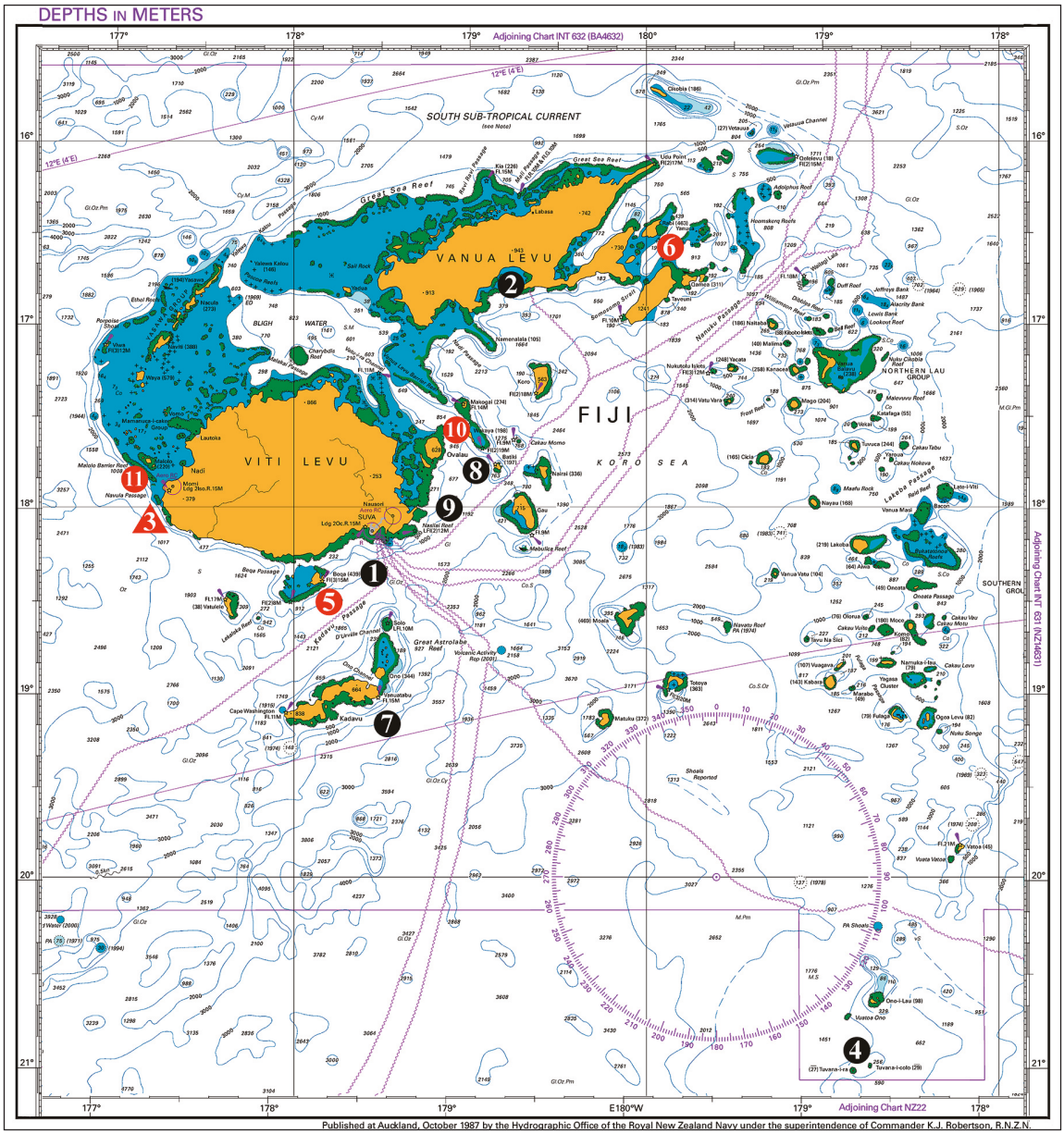Fiji Orca
Orca have been confirmed for the first time in Fijian waters. With sightings of the species in this Pacific Ocean tropical paradise, it just goes to show that an apex predator can be hiding in someone’s big blue backyard!
Studying unknown or understudied orca populations is significant in our mission to protect orca and their habitat through conservation, education and scientific research.
Perhaps one of the most remarkable aspects of this research was the discovery of a completely different group of orca who appear to have either no saddle patches or a very faint ‘belt’.
We are facing a loss of biodiversity around the world and it’s difficult to understand these impacts on orca without having a clear picture of populations worldwide. It’s incredible how much remains to be discovered about this species and we’re dedicated to learning more.

As the orca move through the water the pale grey stripe across the bottom of the dorsal fin of Orca #5 remains visible but it appears narrower as this individual moves forward. Image available in RAW and processed with Adobe Lightroom and Topaz Photo AI. Photo © David Cothran. You can download the paper for free (PDF).

The saddle patch area and the caudal peduncle of Orca #1 and #2 are more exposed as they submerge. Orca #3 is nearly completely submerged. Image available in RAW and processed with Adobe Lightroom and Topaz Photo AI. Photo © David Cothran. You can download the paper for free (PDF).

Taken from a similar angle to Figs 4-6, the chin and right mandible of Orca #3 (partially visible through the water) are both white and a small upper posterior section of the right white eye patch can also be seen on this same orca. Orca #4 has no clearly defined saddle patch, whilst a pale grey stripe across the bottom of the fin is visible, likely an artefact of the light. A rectangular shaped notch on the trailing edge of its dorsal fin is visible. Orca #5 has a white eye patch and the characteristic sexually dimorphic tall dorsal fin of an adult male orca. Image available in jpg and processed with Adobe Photoshop and Topaz Photo AI. Photo © Gerald McCormack. You can download the paper for free (PDF).
Perhaps one of the most remarkable aspects of this research was the discovery of a completely different group of orca who appear to have either no saddle patches or a very faint ‘belt’.
We are facing a loss of biodiversity around the world and it’s difficult to understand these impacts on orca without having a clear picture of populations worldwide. It’s incredible how much remains to be discovered about this species and we’re dedicated to learning more.

Sightings of orca in Fijian waters.
A special thanks to the Global Orca Charity and Avatar Alliance Foundation for their support of this research. Dr Visser also acknowledges the support of her Patreon members – you can join them and get sneak peeks of her research on www.patreon.com/IngridVisser
You can follow the Orca Research Trust on social media to learn more about our research

An extract from the nautical chart number NZ1438, with 11 records of orca in Fijian waters where location was specified (i.e., Record #12 is not illustrated, as only a general reference to Fiji was provided). Those records indicated in black are Unconfirmed or Presumed, those in red are Confirmed. Record #3 is indicated with a ▲ and is the 2006 sighting discussed in detail herein. See Table 2, SM1 and SM3 for corresponding record numbers and additional details.
